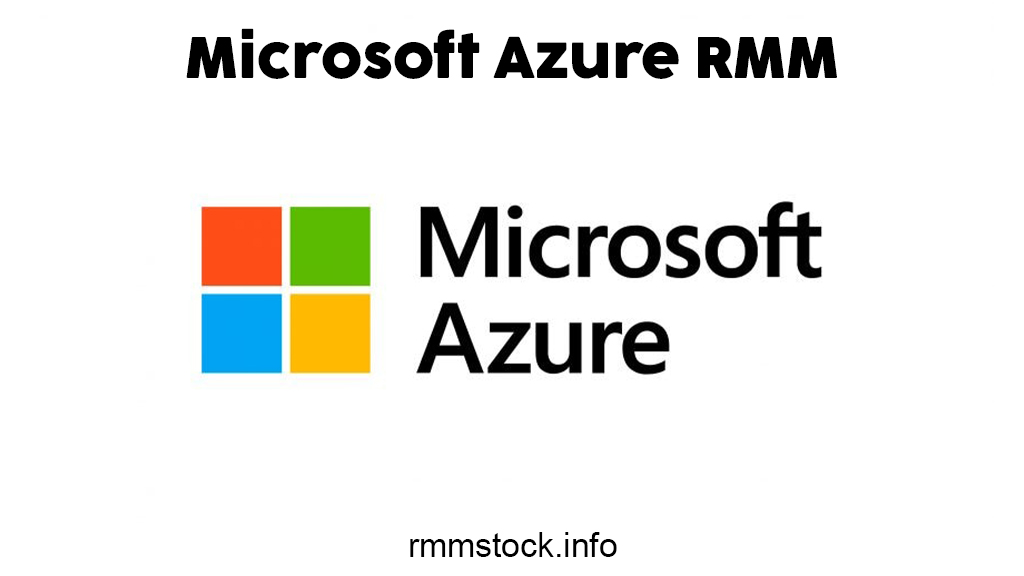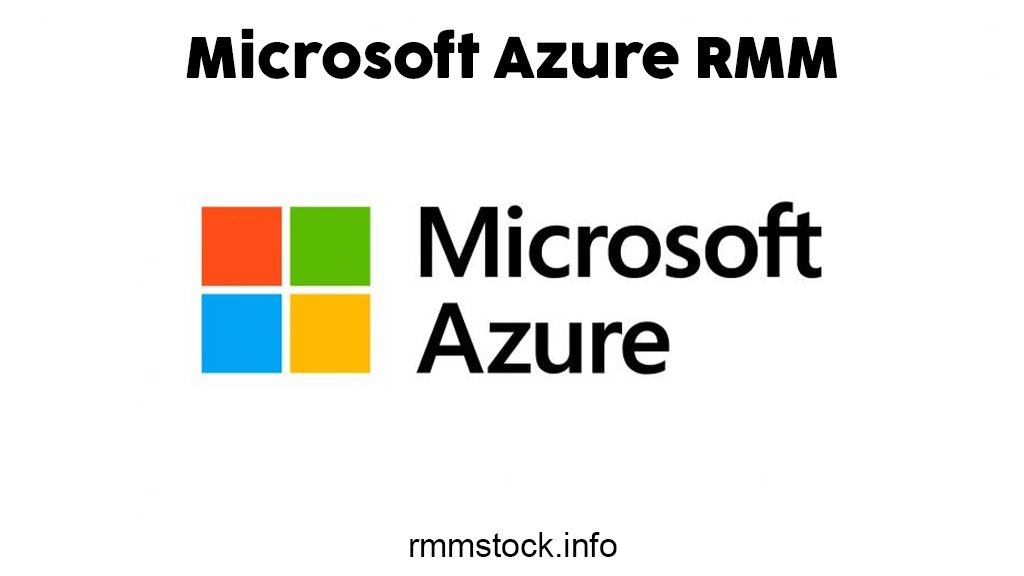Enter Microsoft Azure, a titan in the cloud arena, renowned for its innovative solutions and comprehensive toolsets. Among its arsenal, Azure Remote Monitoring and Management (RMM) is making waves, promising to transform how businesses oversee and optimize their IT infrastructure.
Imagine a control center where every aspect of your technology landscape is monitored with precision, where insights are not just data points but actionable intelligence, and where automation seamlessly integrates into your operational workflow. That’s the essence of Azure RMM.
In this review, we’re going beyond the surface to explore the real impact of Azure RMM. We’ll unpack its standout features, dive into its capabilities, and assess how it stacks up in today’s competitive IT management ecosystem.
Whether you’re an IT professional seeking to elevate your monitoring strategies or a business leader exploring new ways to enhance operational efficiency, this comprehensive analysis will provide you with a clear picture of what Azure RMM has to offer.
Overview Azure
Microsoft Azure Remote Monitoring and Management (RMM) stands as a critical component of the Azure cloud ecosystem, offering a suite of advanced tools tailored to the needs of modern IT professionals and system administrators.
As part of the extensive Azure suite, Azure RMM is designed to empower businesses with sophisticated capabilities for overseeing and optimizing their IT infrastructure. Its seamless integration with Azure Monitor and Azure Security Center ensures a holistic approach to managing applications and infrastructure across diverse environments, whether on-premises or in the cloud.
Azure RMM delivers a unified experience, allowing users to consolidate their monitoring and management tasks within a single, cohesive platform.
This integration facilitates a more streamlined and efficient approach to overseeing complex IT landscapes, making it an invaluable asset for organizations seeking to enhance their operational capabilities and achieve greater visibility into their technology assets.
Key Features

1. Unified Dashboard
At the heart of Azure RMM is its unified dashboard, a feature designed to provide an all-encompassing view of your IT resources. This single-pane interface consolidates information about virtual machines, databases, and networks, presenting it in a user-friendly format.
The dashboard’s customizable nature allows users to create tailored views that suit their specific needs, whether it’s monitoring performance metrics, system health, or resource utilization. This level of personalization ensures that critical data is always at your fingertips, facilitating more informed decision-making and proactive management.
2. Advanced Analytics
Azure RMM harnesses the analytical prowess of Azure Monitor to offer deep insights into your IT environment. The platform provides access to detailed reports and visualizations that illuminate trends, pinpoint issues, and forecast potential challenges before they escalate.
By integrating with Azure Log Analytics, Azure RMM enhances its analytical capabilities with advanced querying and data analysis tools, enabling users to conduct thorough investigations and derive actionable insights from their data. This powerful analytics engine supports a data-driven approach to IT management, helping organizations stay ahead of emerging issues and optimize their systems effectively.
3. Automated Responses
Automation is a cornerstone of Azure RMM, reflecting a commitment to enhancing operational efficiency and resource management. The platform supports automated responses to predefined conditions, such as scaling resources based on fluctuating demand.
This feature not only streamlines operations but also ensures that resources are allocated optimally, thereby reducing costs and boosting performance. Whether adjusting server capacity or deploying additional resources during peak times, Azure RMM’s automation capabilities help maintain smooth and efficient IT operations.
4. Security Integration
Microsoft places a high premium on security, and Azure RMM is designed to align with this principle through its integration with Azure Security Center. This integration ensures that monitoring and management activities adhere to industry best practices in cybersecurity.
Users benefit from real-time security alerts and actionable recommendations for mitigating potential threats, enhancing the overall security posture of their IT infrastructure. By incorporating security insights directly into the monitoring process, Azure RMM helps safeguard against vulnerabilities and ensures a robust defense against emerging cyber threats.
5. Cross-Platform Support
Azure RMM’s versatility extends to its cross-platform support, accommodating a diverse array of technologies and environments. Whether managing a hybrid setup that includes both on-premises and cloud-based resources or dealing with various operating systems, Azure RMM provides the flexibility needed to navigate these complexities.
This comprehensive support ensures that organizations can efficiently manage their entire IT landscape from a single platform, regardless of the underlying technology or deployment model.
Strengths
1. Scalability
Azure Remote Monitoring and Management (RMM) excels in scalability, adapting effortlessly to the evolving needs of businesses of all sizes. Its cloud-native architecture is designed to handle increasing volumes of data and complexity without compromising performance.
As your organization expands, Azure RMM dynamically adjusts its resources to accommodate growth, ensuring that your monitoring and management capabilities remain robust and effective.
This scalability is achieved through features such as auto-scaling, load balancing, and elastic resource allocation, allowing you to efficiently manage more devices, users, and data without requiring significant infrastructure changes.
2. Integration with Azure Ecosystem
Azure RMM benefits greatly from its seamless integration with the broader Azure ecosystem, enhancing its overall value and utility. By leveraging existing Azure tools and services, Azure RMM creates a cohesive and interconnected environment for managing IT operations.
This integration includes compatibility with Azure Active Directory for identity management, Azure Log Analytics for advanced data insights, and Azure Automation for streamlined workflows.
Such interoperability ensures that you can harness the full power of Azure’s suite of services, leading to more efficient operations, improved data visibility, and a unified approach to IT management.
3. User Experience
The user experience offered by Azure RMM is designed to be intuitive and efficient, with a focus on ease of use and accessibility. The platform features a streamlined interface and a customizable dashboard that cater to the needs of IT professionals at various levels.
Users can quickly and easily navigate through the system, access critical information, and perform necessary tasks without encountering a steep learning curve.
The intuitive design includes features such as drag-and-drop functionality, customizable widgets, and real-time alerts, all of which contribute to a smoother and more productive user experience. This thoughtful design approach minimizes training requirements and enhances overall user satisfaction.
Areas for Improvement
1. Complexity for Beginners
Azure Remote Monitoring and Management (RMM) boasts a range of powerful features that can significantly enhance IT operations. However, this power comes with a degree of complexity that can be daunting for users who are new to the Azure ecosystem.
The platform’s extensive functionality and intricate configuration options may present a steep learning curve for beginners. To address this, Azure RMM could benefit from a more streamlined onboarding process that guides new users through the setup and usage of the platform.
Enhanced documentation, including comprehensive tutorials, step-by-step guides, and interactive help resources, would also help to simplify the initial learning phase. Additionally, offering more beginner-friendly resources and support could make the transition smoother and reduce the initial frustration associated with using a sophisticated system.
2. Cost Considerations
As part of the Azure suite, Azure RMM operates on a pay-as-you-go pricing model, which can lead to cumulative costs based on usage. For businesses, this means that managing and predicting expenses can be challenging, particularly if usage scales up or if there are fluctuations in service needs.
To mitigate this issue, it is essential for organizations to carefully assess their requirements and budget accordingly. Azure RMM could improve its value proposition by offering more transparent pricing models and cost management tools that help users track and control their expenses more effectively.
Features such as cost calculators, budget alerts, and detailed usage reports would assist businesses in avoiding unexpected costs and making informed financial decisions.
3. Customization Limits
While Azure RMM provides a customizable dashboard, some users have encountered limitations when it comes to tailoring specific features to their unique needs. These constraints can impact the platform’s flexibility and overall appeal.
To enhance user satisfaction and broaden its usability, Azure RMM could benefit from expanding its customization options. This might include allowing deeper modifications of dashboard elements, creating custom widgets, and providing more granular control over monitoring and reporting features.
Increased flexibility in customization would enable users to tailor the platform more closely to their specific requirements and preferences, thereby improving their overall experience and effectiveness in managing IT operations.
Conclusion
Microsoft Azure RMM represents a significant advancement in remote monitoring and management, offering a rich set of features that cater to the needs of modern IT environments. Its integration with Azure services, advanced analytics, and automation capabilities make it a compelling choice for organizations seeking robust management tools.
However, the complexity for beginners and cost considerations are areas that warrant attention. As Azure continues to evolve, it is likely that Azure RMM will also see enhancements that address these concerns, further solidifying its position in the cloud management landscape.
